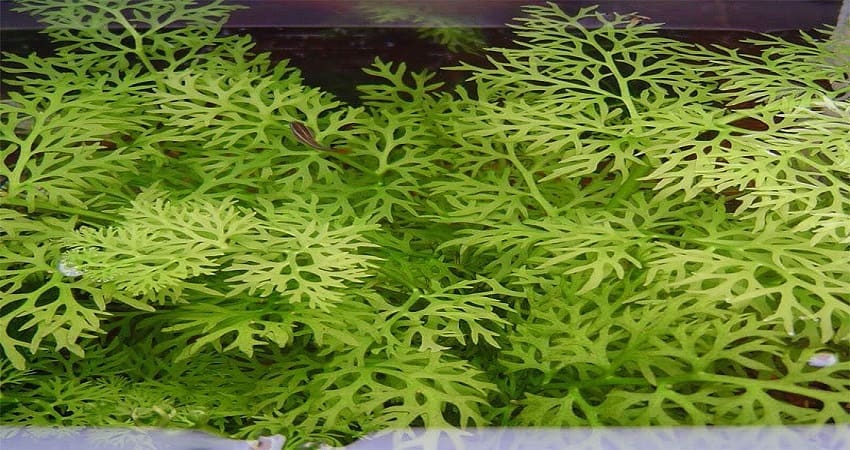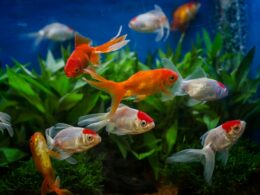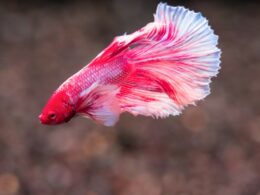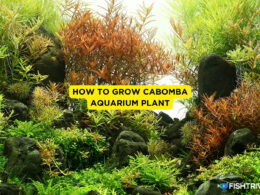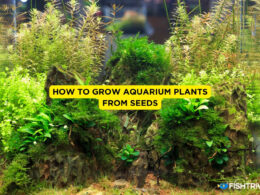In this article Show
Water sprite will grow as a floating plant or during a substrate due to its weak scheme, urging it to urge nutrients from the water. If you wish for a lot of beauty than filtration in your tank, planted Indian ferns area unit is a decent selection. As a result, use it to spruce up the center and back of your tanks.
One of the foremost fashionable marine museum plants is the Water fairy. Since its leaves mimic nonflowering plant leaves, it’s sold out below a variety of names, as well as fern and Indian nonflowering plants. If unbroken and stable, the plant is simple to worry about and may face most new tank conditions.
A hydrophytic plant in your marine museum not solely offers a secure atmosphere. However, it additionally contributes to the magnificence of the scene.
And once that plant could be a Water fairy, your aquarium’s beauty is increased to a whole new level. It’s beautiful to visualize colorful fish swimming in and around it, enclosed by the very fashioned leaves of this brilliantly colored herb.
On the opposite hand, the floating water fairy is healthier for shade. Water filtration resulting from the plant will directly sip nourishing minerals from the water, like nitrates, that area unit otherwise toxic and may kill your fish.
This article can show you ways to worry for and develop and care for the water sprite aquarium Plant. So, let’s get this conversation going.
Also worth reading;
- How To Grow Hornwort Aquarium Plant: Care Guide
- How To Anchor Aquarium Plants
- Can Aquarium Plants Grow in Cold Water? What’s The Best Temperature
- How to Grow Cabomba Aquarium Plant: Complete Guide
What Is The Importance Of The Water Sprite Plant?
A Water fairy could be a fashionable fresh marine museum plant that it may find nearly all over, as well as in pet stores and chain stores.
Water fairy is usually sold-out below a spread of names and ferns, Indian nonflowering plants, and Indian fern—water Sprites area unit among the foremost variable marine museum plants accessible.
The Water Sprint, additionally familiar by its scientific name floating fern, could be a member of the genus Ceratopteris genus that belongs to the fern family. Oriental Waterfern, Indian nonflowering plant, Water Fern, and Water Hornfern area unit are a number of opposite names for this marine museum plant that is understood for being straightforward to worry for and versatile.
It thrives in most fresh tanks and would possibly be placed within the background or within the middle of the tank to supply lovely shade for fish WHO might get pleasure from having somewhere to cover.
The Water Sprite Plant’s Origins
This pan-tropical hydrophytic plant contains a worldwide distribution and may be found in abundance in Africa, Asia, Australia, Central America, and South America.
It may find this fresh plant in flooded wetlands, swamps, rivers, marshes, and each alternative body of water with slow or maybe stagnant water. They’re going to flourish in each sunny and shady conditions.
Getting Water Sprite Aquarium Plant
Adding a floating water sprite to the tank surface can help the plant absorb more nutrients from the water while also providing hiding places for mid-and top-dwelling fish. Your floating water sprite would also have more light, resulting in improved growth due to natural nutrients and better lighting.
A classic benefit of floating water sprites is that they act as a mirror, allowing only a limited amount of light to reach the bottom of your tank, preventing algae growth.
Other plant species that thrive in low to medium light and fish that prefer low-light aquariums may benefit from the reduced light penetration. Fish native to temperate regions of the world, where natural light scarcely penetrates the water in rivers and lakes, are among them.
Furthermore, since floating water sprites need root anchors, the plant can launch itself onto other plants, aquarium surfaces, and decorations such as driftwood, creating a one-of-a-kind display within your tank.
Simply drop the Indian fern plant’s stem and leaves into the aquarium water to make it float. The plant can grow roots that hang below the rest of the plant and absorb nutrients from the water within a few days.
The ease with which it can start water sprite is why many hobbyists prefer floating plants to planted choices.
Growth of Water Sprite Plant
A planted Water Sprite will grow tall and bushy in the right conditions. A floating Water Sprite will mature into a floating green network of stems, leaves, and roots in the water column.
It’s OK to use standard group tank lighting. However, lighting intensity and exposure time affect the growth rate. When all other factors are equal, Water Sprite plants grow slower in low lighting and faster in moderate or high lighting.
Longer hours of light, in comparison to shorter hours of light, would allow faster development. Water Sprites floating in freshwater grow at a quicker speed than plants rooted in the substrate.
As opposed to plants near the tank’s bottom, a floating plant receives much more intense light. A Water Sprite floating in aquarium water often tends to have a broader root structure than cultivated. The root systems of floating plants become web-like and fine, resembling fabric fibers.
With longer primary and secondary roots, planted root systems take on the appearance of other forms of planted plant roots. Finally, in low-tech tanks, plant fertilizer can speed up the growth rate of Water Sprites.
The leaves of the Water Sprite are fragile, numerous, delicate, and lattice-like. The blades, which resemble fern plants, grow outward from the plant stems in web-like patterns. The leaves of planted Water Sprites are thinner while floating Water Sprites’ leaves grow to be a little more challenging, broader, and flatter.
Water Sprite Plant Care
Here is how to care for your water sprite plant;
1. Luminescence
Water sprite should be grown in low to moderate light conditions. However, since plant production is highly dependent on light intensity, the results can differ.
The water sprite will grow slowly in low light, and with this must remove the cut-off outer stems will increase while in moderate to high light. Furthermore, longer light hours can foster rapid development. However, without the right conditions, rapid water sprite production comes at a high cost.
More light and more prolonged exposure, for example, will encourage algae growth. Furthermore, rapid water sprite growth can get out of control, resulting in a tall, bushy mess inside your aquarium.
They have a web-like cover with more extensive, more challenging, and flatter leaves, while planted water ferns have thin needle-like leaves and grow like regular fern plants.
2. Fertilizer and CO2 Dosing
With doses of aquatic plant fertilizer and CO2 addition, it can increase water sprites’ growth rate.
When you have a large tank with many plants, add nutrients to help the plants get more nitrogen. However, given the available nitrogen, the usual water sprite growth rate is adequate in a small aquarium with few plants.
If you have to dose aquatic plants, make sure your tank is equipped to handle the extra nutrients. If you add too much, bacteria may grow and will harm your plants.
3. Water Sprite Trimming
This should trim the overgrowth of water sprites now and then because too many leaves can escape the tank until it is complete. Furthermore, the vegetation will prevent plants from growing at the bottom from gaining access to light.
When trimming, you’ll need to branch by branch, trimming the plant’s edges from the outside in, making sure you get rid of as many chunks as possible.
Trim the leaves emerging between adjacent branches instead of cutting out too many large chunks from the plant after you’ve cut a few branches but still have a dense foliage cover.
Granted, you’ll have a lot of wastewater sprite once you’re finished trimming, but before you throw it away, consider offering it to other aquarists who are just getting started with their tanks. Alternatively, you can take the trimmings to a nearby fish store and swap them for credit.
Unfortunately, you will have to throw your trimmed water sprite away with other weeds if you can’t find anyone to give it to or even a nearby store willing to turn it into credit.
4. Tank Size and Water Conditions for Water Sprites
It can find water sprites in the wild in the moderately deep waters of wetlands and swamps. The plant thrives in low-movement water under various natural light intensities due to its delicate leaves, stems, and roots.
In a traditional aquarium, recreate this scene by planting your water sprite from the direct water flow. The plant requires soft aquarium water with a temperature between 68°F and 82°F and a ph of 6.0 to 7.5 for optimal growth. this must remove the cut-off outer stems
Water Sprite’s Advantages
The advantages of Water Sprites go far beyond the aesthetic value they add to your freshwater tank. Let’s take a look at some of this plant’s advantages.
Water Sprites assist in the cycling of your aquarium. They are thought to be one of the best oxygen producers for your aquatic pets. The leaves of this plant can be used as a source of food for a variety of fish.
They will provide your aquatic pets with much-needed shelter and hiding places. They can provide much-needed shade to your pets from the harsh lights if kept as a floating vine. They’re also a perfect place for fish to lay their eggs.
Water Sprite Maintenance
Water Sprites are relatively simple to care for since they are easy to manage. All you have to do is provide them with sufficient accommodation and ensure that they do not run amok. Trim their outer stems regularly.
As previously said, do not trim their main stem because this will cause them to die. This must remove the cut-off outer stems from the tank as soon as possible; otherwise, they will sprout new plants.
Furthermore, since the plant consumes so much potassium, phosphorus, and nitrogen, you may find a nutritional deficiency in your aquarium when you add it to your freshwater tank. Feel free to add supplements in the form of liquid or powder in this situation.
Consequences of Using Water Sprite
The following are the consequences of using water sprite in your aquarium;
1. Pale growth
This is a symptom of an iron deficiency. The Water Sprite becomes paler and less vivid over time. It can solve this problem by adding soluble iron to the tank’s water. Iron also aids in the development of sound, vibrantly colored leaves.
2. Leaves with holes
Potassium deficiency causes holes in the plant’s older leaves. It can combine water Sprite with potassium supplements to help fight this.
3. Leaf Browning
Inadequate fertilization is the most common cause of leaf browning. Root tabs, such as Seachem Flourish Tabs Growth Supplement, will help to reverse this condition.
4. Algae
The presence of too many nutrients in the tank water, as well as too much light illumination, promotes the growth of algae. To combat this, cycle the tank water regularly, reduce the light strength, and trim algae-bearing stems for immediate disposal.
Water Sprite Propagation
Water Sprites replicate efficiently in the right conditions. These freshwater aquatic plants reproduce by developing adventitious shoots, which are small plants that split off from the main plant. Breaking off the small plants does not require your assistance.
It means that in a nutrient-rich environment, a single parent may have multiple offspring. As a result, there is a significant risk of overcrowding as a result of them. Remove plantlets as soon as they begin to sprout to ensure this.
Water Sprites can also replicate by laying eggs in their stems. If your plant’s stem has been severed and there are enough leaves on it, it can establish roots and become a separate plant. If you want to add many plants to your tank, hold the cuttings at least a few inches long and with plenty of leaves.
This is only recommended for big tanks because you don’t want to cut off your fish’s swimming space if you have any. Overcrowding the tank is also not a brilliant idea. As previously mentioned, these plants absorb far too many nutrients from the tank, necessitating the addition of nitrogen.
On the other hand, too much nitrogen will cause a bacterial infestation and make your plant sick. So, proceed with caution.
Frequently Asked Questions
How do you keep the plants in your freshwater aquarium alive?
Freshwater aquarium plants, like your fish, need a clean atmosphere to thrive. Cleaning your fish tank with the right fish tank cleaner regularly will help, but staying on top of algae growth is critical.
In an aquarium, how do you put a water plant in?
Layer 2 to 3 inches (5-8 cm) of aquarium gravel (approximately 112 pounds of gravel per gallon of water) or another plant-friendly substrate on the aquarium’s floor. Apply aquarium-plant fertilizer according to the label’s directions—half-fill the aquarium with water. It should include plants.
Is it possible to eat water sprite?
Water sprite is a popular dish in some parts of the world, including Madagascar, Vietnam, and New Guinea, and is a model organism for genomic studies. However, even when cooked, the plant can contain carcinogens, so should exercise caution if harvesting is planned.
Is it simple to grow water sprite?
It’s easy to float a Water Sprite. Simply place the stem and leaves in the aquarium. The plant will begin to grow roots that will hang down from the plant within a few days, and it will draw its nutrients from the water itself.
Is Water Sprite a low-light character?
Water Sprite grows best in medium to high light levels, but it can still grow in low light – albeit at a much slower speed. In a tank with a water sprite, it’s often better to use a whole spectrum of light, and algae growth is rarely an issue.
Is it true that goldfish consume Water Sprite?
The Water Sprite, also known as the Indian Water Fern, is one of the best goldfish plants. This plant has a lot of small, fern-like light green-colored leaves that goldfish enjoy eating.
Conclusion
One of the most common errors people make is not getting plants in their group tank. A preference should be given to water sprites or other plants.
These are not only lovely additions to your tank, but they also contribute significantly to the welfare of your society. These plants will do everything you need them to do, from cleaning the water to providing shade to providing homes and hiding spots for shy fish.
It’s the plant that doesn’t die. Water Sprite is a tough plant that is one of the best freshwater plants you can grow in your aquarium. It proliferates, reproduces quickly, and can live for a long time.
Water Sprite can be grown alongside Water Wisteria or Monte Carlo to create a visually appealing and beautiful jungle effect in the aquarium. Water Sprite is a versatile plant that can quickly adapt to a variety of tank conditions and setups.
They are highly hardy and have a rapid growth rate. This suggests that the plant is simple to care for and can take care of the bulk of the work independently.






